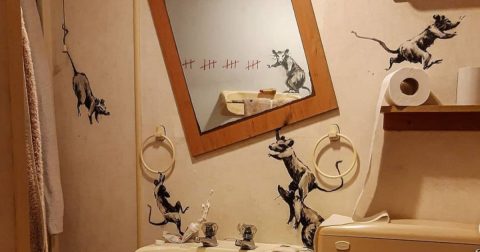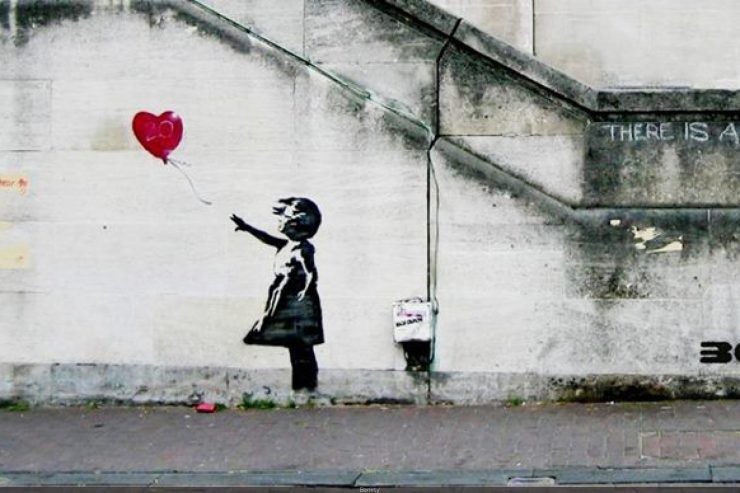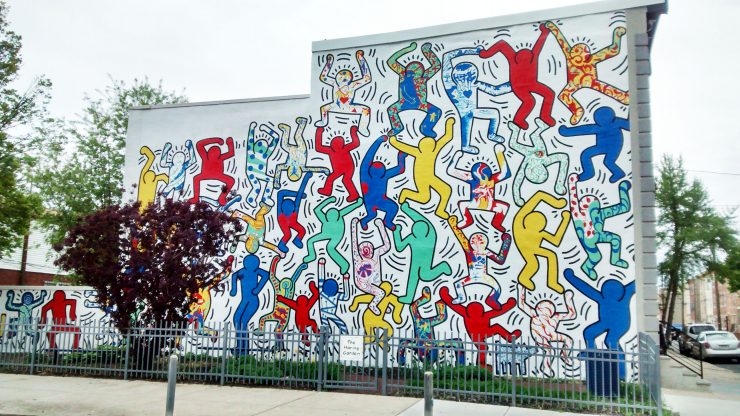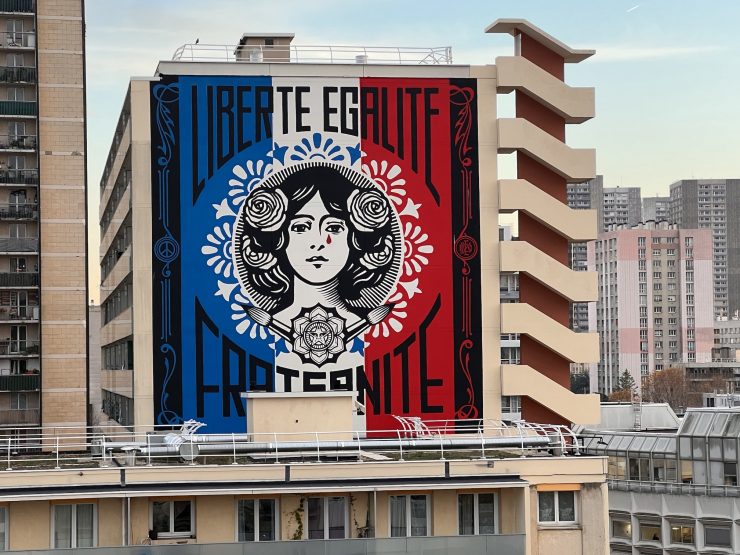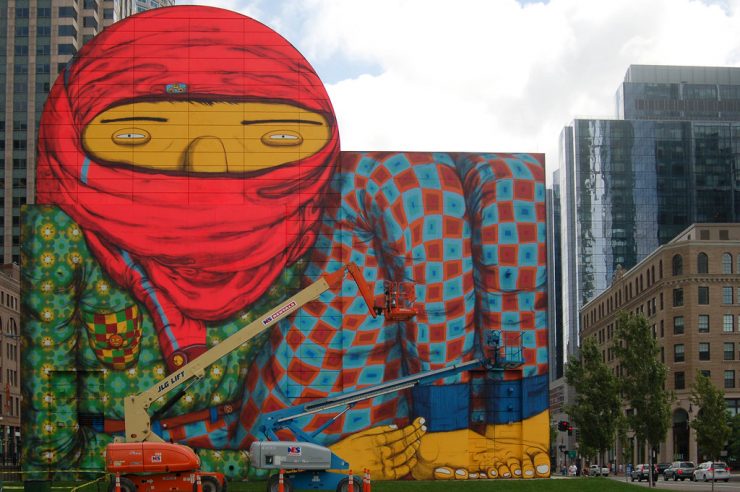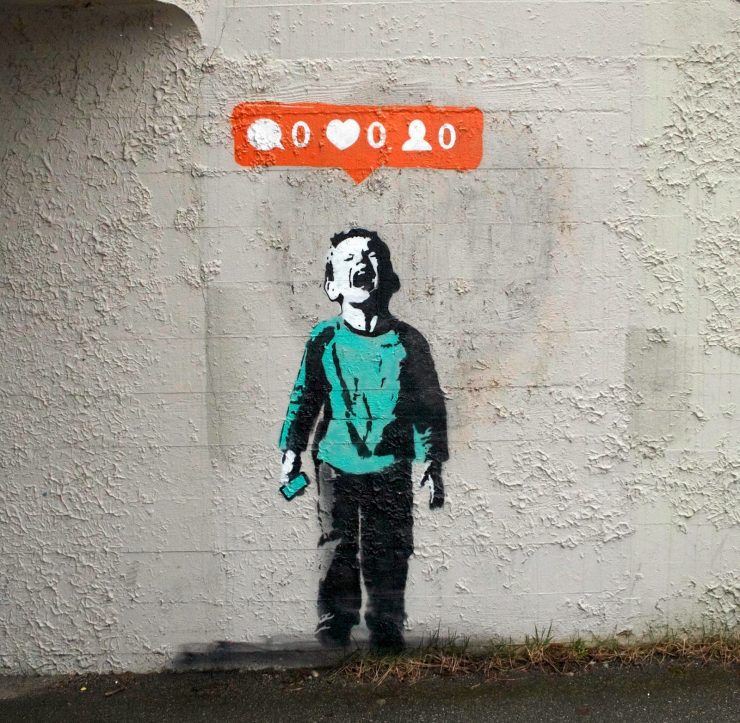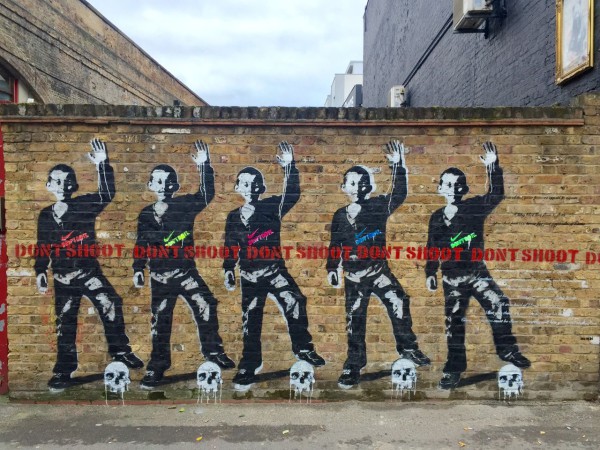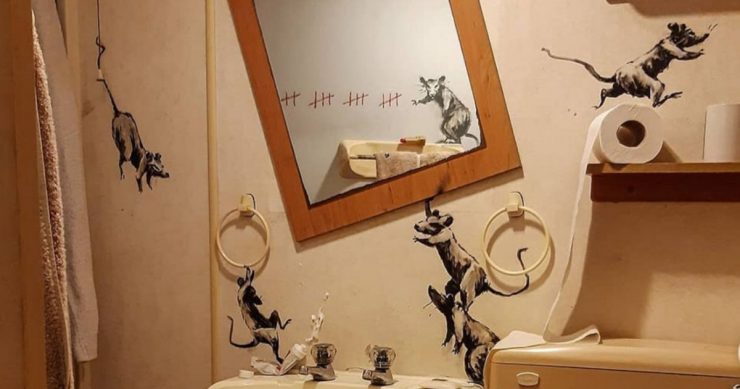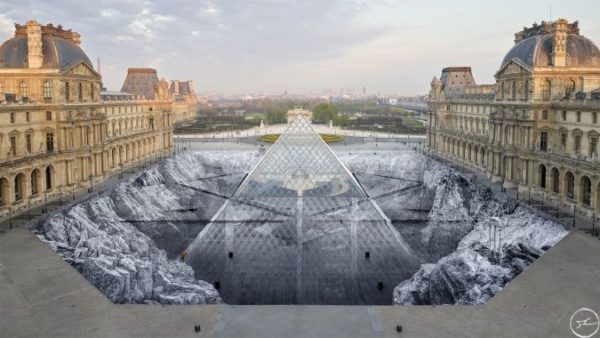Associated for centuries with the elite, art has long been thought of by and for the powerful. However, the 19th century, the cradle of a new world, began to question this tendency, focusing more and more on popular social and everyday representations. From this time onwards, art represented the humble. Most of the time, however, it remained on the walls of museums or in private collections and galleries, enjoying only the attention of those who could afford it.
With the emergence of street art in Philadelphia in the 1960s, the system was challenged. Initiated by Cornbread and Cool Earl through “graffiti writing”, the movement eventually attracted New York artists such as Taki 183 and Blade One, who made it famous. At the same time, the commercialisation of spray paint cans helped to spread the practice. On the street, on pavements, on walls and in the underground, everything became a pretext for creating and conveying messages, but at what cost? Turning the urban landscape into an open-air museum, street artists defied the law and took risks to avoid being arrested by the authorities, who considered them vandals. However, the machinery was set in motion and the threat of conviction did not discourage these creators who, by dint of hard work and insistence, ended up being recognised both by the public and by the history of art.
The most famous work we can mention is undoubtedly Girl with Balloon, created by Banksy in London in 2002. The English artist, whose identity is paradoxically unknown, depicts a girl reaching for a red heart-shaped balloon that flies away. The image, accompanied by the phrase ‘There is always hope’, is representative of Banksy’s style, which is characterised by a perfect balance between humour and poetry. Girl with Balloon is in the news again in 2018. At an auction at Sotheby’s, an original silkscreen of the work sold for €1.2 million. However, just seconds after the sale, it self-destructed before the incredulous eyes of onlookers. Alex Branczik, director of the auction house, declared “It looks like we’ve just been Banksyfied”. A few days later, Banksy posted a video in which he explained that “a few years ago I had secretly incorporated a paper shredder into the framework, in case it came up for auction”. The video was accompanied by a quote attributed to Picasso, “What a pleasure to destroy and start again”.
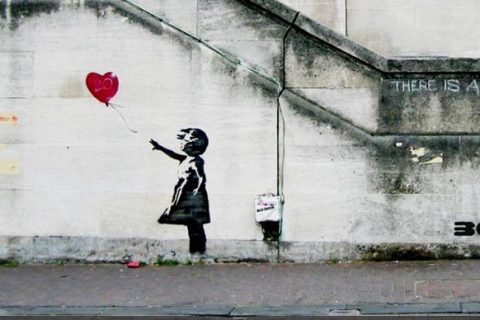
Keith Harring, famous for his stylised and colourful characters, illustrates his struggle with drugs and the scourge of AIDS, from which he eventually died in 1990. To commemorate the bicentennial of the US Constitution in 1987, he created We the Youth, a monumental work he created in collaboration with fourteen high school students and other artists such as Clarence Wood, Gilberto Wilson and José Seabourne. Although at first glance the painting has nothing to do with the Constitution, it is the fact that it brings together twenty people, regardless of their origin or social background, that gives it its full meaning: unity. Moreover, its location was chosen in a working-class neighbourhood in Philadelphia with the aim of contributing to its development.
Street art is often inspired by the present day. It was in the aftermath of the 2015 Paris attacks that Obey Giant gave the city his Marianne in the colours of the French flag. It is a national icon, synonymous with freedom, unity and peace, which the American artist decided to take up again to show his support and denounce the horrors experienced in the capital on the night of 13 November. One of the characteristics of urban paintings is that they tend to be ephemeral. Marianne, on the other hand, has been enthroned at 186 rue Nationale in the 13th arrondissement of the city of light for almost eight years.
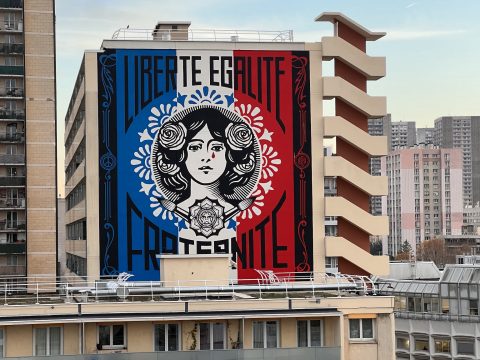
Let’s move on to Brazil, where Kobra created the largest urban painting ever made in 2016. Measuring 190 metres wide and 15 metres high, it was on the occasion of the Olympic Games that the Brazilian artist imagined five faces from five different origins, representing the five continents, as well as the union of peoples and the diversity of ethnicities. This is, in fact, the title of the work, Etnias. Still in Brazil, the brothers Ostavio and Gustavo Pandolfo, better known as Os Geomos, are internationally renowned artists. In addition to their native country, the twins also create in the United States, especially in Boston, where, in 2012, they participated in an exhibition at the Institute of Contemporary Art. Inspired by their dreams and everyday life, the Brazilians opted for a colourful work that, through its monumentality, observes urban life with a confident gaze. The Bostonians nicknamed the fresco The Giant of Boston.
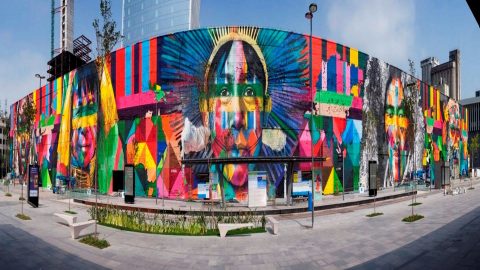
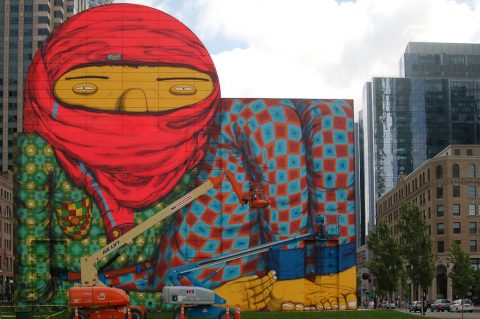
Let’s move on to Canada, and more specifically to Vancouver, where in 2014 Iheart unveiled his work Nobody Likes Me to the world, which went viral. The work depicts a boy crying and, above his head, the public discovers why: he has no followers, comments or ‘likes’ on instagram. The ridiculousness of this misadventure, which at first glance seems childish, nevertheless denounces the digital hyperconnectedness of society, which in turn disconnects individuals from each other. The fresco, made with a stencil, was applauded and shared by Banksy himself on his Facebook page.
JR is a French street artist specialising in photographic collage. His monumental works, which play with the public’s senses, have been seen in Paris. The most famous is undoubtedly The Secret of the Great Pyramid. The installation, created in 2019, distorts reality and allows visitors to float above the void to glimpse the heart of the Louvre. Not far from the Centre Pompidou in Paris, Jef Aerosol exhibits a self-portrait entitled Chuuuuuttt! This self-portrait is an invitation to calm and silence amidst the dynamism of the French capital, as well as a call for respect for artistic creation.
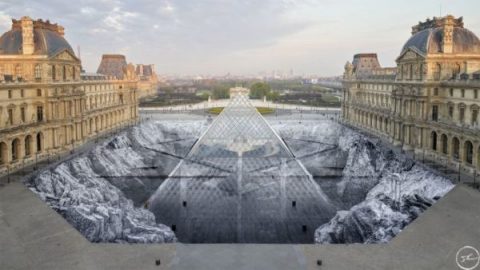
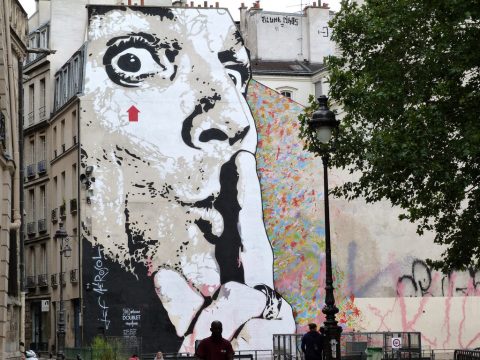
In England, Bambi, an anonymous street artist, denounces injustice through her depictions, most of them stencilled. In Don’t Shoot, she illustrates five identical boys with their hands in the air. At their feet, the football is replaced by a human skull. All the characters wear the same T-shirt with the Nike logo and the reworked slogan “Don’t do it”. The play aims to denounce police violence in Ferguson (Missouri) and, more specifically, the murder of 18-year-old Michael Brown. The tragedy unleashed numerous racial tensions.
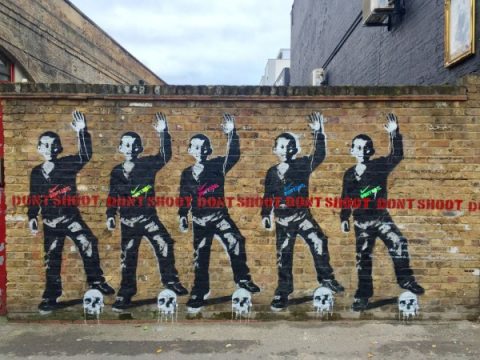
There are other women to highlight in the street art scene. Argentinean artist Hyuro is known for her depictions of the plight of women, in particular women’s emancipation, abortion, patriarchy and the fight against sexual abuse. Miss Tic, meanwhile, is characterised by depictions of brown-haired women, often accompanied by puns advocating freedom. Considered one of the pioneers of street art, Lady Pink got her start in the New York underground, a place she saw as a moving canvas. Today she is internationally recognised and even teaches at major American schools.
DID YOU KNOW
- During his confinement, Banksy posted a photo of a work he had done in his bathroom. The caption humorously read: “My wife hates it when I work at home”.
